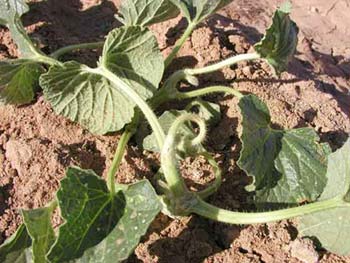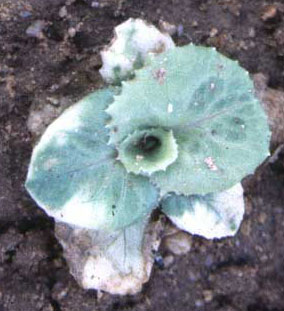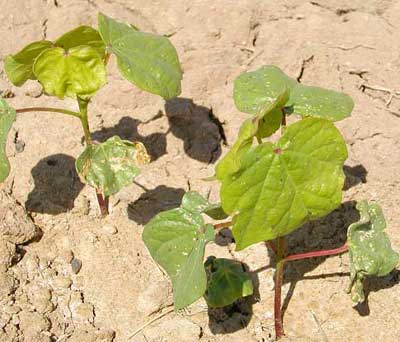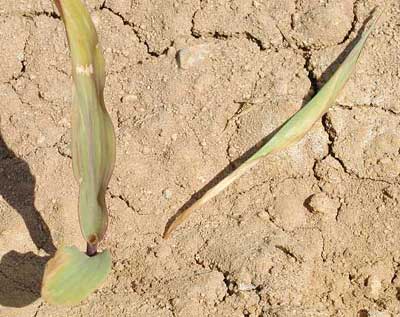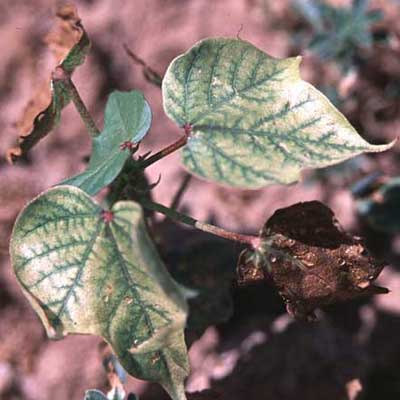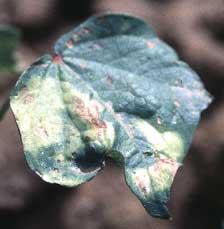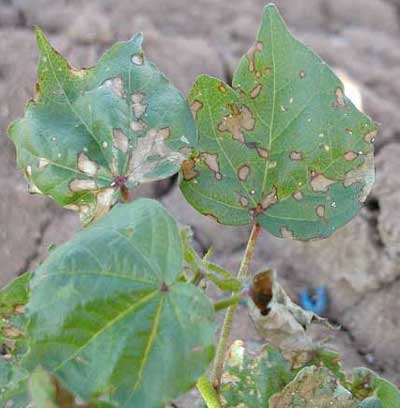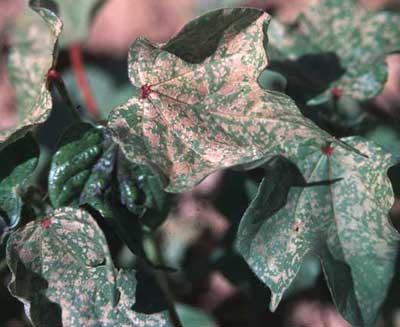Herbicide Symptom Key
II. Herbicides with significant foliar use - classified by translocation pattern - some herbicides in this group are exclusively applied to foliage while others can be applied to foliage but are more commonly applied to soil
Symptoms:
A. Translocated herbicides showing initial symptoms on new growth.
B. Translocated herbicides showing initial symptoms on old growth.
C. Non-translocating herbicides showing initial localized injury.
A. Translocated herbicides showing initial symptoms on new growth
Auxin type growth regulators - twisted deformed growth with death resulting in days to weeks. Selectivity: broadleaves are much more sensitive than grasses. Translocated in the phloem to meristematic regions.
Aromatic amino acid synthesis inhibitor - yellowing and wilting that progress from the new to the older tissues. Can cause deformed leaves and multiple shoots or whorls of narrow or strapped leaves on regrowth in some plants.
Branched chain (aliphatic) amino acid inhibitors - shoot meristems or growing points become yellow and die. Yellow streaks and pink and purple veins can develop on leaves. Root growth is also stunted.
Lipid biosynthesis inhibitors - discoloration and disintegration of meristematic tissues, leaf sheaths at the nodes become mushy and brown, leaves turn yellow, sometimes wilt and necrotic symptoms spread over the entire plant
B. Translocated herbicides showing initial symptoms on old growth. When applied to the soil, these herbicides move with water to fully expanded, transpiring leaves so that older leaves show symptoms first. When foliar applied, these herbicides do not move out of the treated leaves.
Classical photosynthetic inhibitors - interveinal (most triazines) or veinal chlorosis (phenylurea) or general chlorosis of leaves and yellowing of leaf margins followed by necrosis in affected areas.
Rapidly acting photosynthetic inhibitors - rapid development of a "water soaked" appearance followed by dessication and necrosis.
C. Non-translocating herbicides showing initial localized injury
Photosystem I energized cell membrane destroyers - rapid development of "water soaked" appearance followed by dessication and necrosis.
Protoporphyinogen oxidase (Protox) inhibitors
- rapid development of "water soaked" appearance followed
by dessication and necrosis.
Glutamine synthesis inhibitor - bronzing of leaves followed by chlorosis and necrosis.
(No photo available)
Issued in furtherance of Cooperative Extension work, acts of May 8 and June 30, 1914, in cooperation with the U.S. Department of Agriculture, James A. Christenson, Director Cooperative Extension, College of Agriculture, The University of Arizona.
The University of Arizona is an equal opportunity, affirmative action institution. The University does not discriminate on the basis of race, color, religion, sex, national origin, age, disability, veteran status, or sexual orientation in its programs and activities.
Because labels are subject to frequent change, always consult the label attached to the product before using any pesticide. The user must assume responsibility for proper application and for residues on crops as well as for damage or injury caused by pesticides, whether to crop, person or property.
Any products, services, or organizations that are
mentioned, shown, or indirectly implied in this web document do not imply
endorsement by The University of Arizona.
Erin Taylor, etyalor@cals.arizona.edu Extension Agent, Field & Veg Crops
William B. McCloskey, wmcclosk@ag.arizona.edu Extension Weed Specialist
College of Agriculture, The University of Arizona, Tucson, AZ.
Material written June 2003.
Key home page | Soil Applied | Foliar Applied
Cotton Weed Pubs | Forage Weed Pubs | Grain Weed Pubs | Vegetable Weed Pubs
Home | Weeds Home Page | Citrus Weeds
document located at: http://cals.arizona.edu/crops/weeds/key/parttwo.html
Copyright © 2001 University of Arizona,
College of Agriculture and Life Sciences
webmaster: jsjones@ag.arizona.edu
